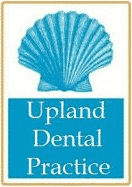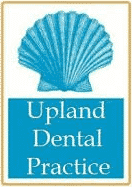Have you ever found yourself fearing having a root canal and worrying about how painful the process is? You’re not alone. This fear is common among many people.
But what if we told you that getting a root canal doesn’t have to be painful and complicated?
In this article, we will help you better understand the root canal procedure, demystify the recovery process, and provide actionable aftercare tips. You can handle your recovery with ease and confidence if you have the appropriate knowledge and follow a few easy procedures. Let’s discover how straightforward root canal recovery can be.
Understanding Root Canal Procedures
A root canal is a common dental procedure designed to treat infection or damage in the innermost part of the tooth, containing nerves and blood vessels. During a root canal treatment, an infected or damaged pulp is removed, the tooth’s interior is cleaned, and the tooth is then filled to stop further infection. This treatment is essential for saving a tooth that might otherwise need to be extracted
What happens during a root canal procedure?
- An Upland dentist will examine your tooth. X-rays are used to assess the extent of the infection or damage. To help eliminate the pain during this procedure, a local anesthetic is administered to numb the affected area.
- Your dentist will drill a small opening in the top of the tooth to access the infected or damaged pulp inside.
- A diseased pulp will be removed from the root canals and the chamber inside the tooth using dental tools.
- At this point, your dentist will clean and disinfect the empty canals with an antibacterial solution.
- Tooth canals will be filled with a rubber-like material called gutta-percha (this helps seal the canals and prevent infection)
- A temporary dental filling will be placed to seal the tooth and prevent infections.
- Your dentist will place a dental crown over the treated tooth to provide additional strength and protection.
A 2022 study showed that the success rate of a root canal procedure was very high (around 93%) when using a general approach, but lower (around 82%) when using stricter criteria. Related studies also showed that success rates improved over time. Specifically, studies that followed people for at least four years had better results when using stricter criteria.
The Recovery Timeline
After a root canal, recovery usually takes a few days to several weeks. Here is what to expect during recovery:
After the procedure – The anesthesia will wear off. Sensitivity and mild to moderate pain in the affected area should be expected. You will notice swelling and tenderness around the treated tooth and jaw. Do not worry, this is normal.
Days 2-3 – The pain will subside but may still be present. The swelling and tenderness are also reduced.
1st Week – You should only feel minimal pain during this period. It should only be noticeable when pressure is applied to the tooth. The swelling should be gone by now.
2nd Week – You should experience little to no pain by now. Your tooth should feel more normal, with any lingering discomfort continuing to fade.
You have a successful healing process if you experience the following:
- Little to no pain and discomfort after a week.
- Swelling has subsided within a few days.
- The tooth returned to normal function after a week or two.
However, you may want to contact your dentist if you experience the following after a week:
- Intense pain that doesn’t subside.
- Persistent swelling.
- Signs of infection like fever, and bad odor.
- Continued sensitivity to temperature changes or pressure.
Post Root Canal Aftercare and Lifestyle Adjustments
After a root canal, proper aftercare and lifestyle adjustments are important for faster recovery. Here are some aftercare steps, dietary recommendations, and tips for resuming normal activities.
Aftercare tips
- Refrain from chewing on the side of your mouth with the treated tooth to prevent irritation. Also, avoid biting hard until the permanent crown is installed.
- Avoid gums and sticky foods that might damage the temporary filling.
- Brush and floss your teeth regularly. Be gentle around the affected area to prevent irritation.
- You may use a gentle antiseptic mouth rinse to help keep the area clean and reduce the risk of infection.
Recommended foods
- Soft foods such as yogurt, mashed potatoes, scrambled eggs, and soups.
- To avoid sensitivity, consume foods and drinks that are at a moderate temperature.
Avoid these foods
- Nuts, hard candies, and raw vegetables. These could irritate the treated tooth.
- Cold or hot foods and drinks. This will trigger sensitivity.
In the first 24-48 hours after the procedure, focus on resting. You may gradually resume your normal activities over the next few days as your comfort level improves. Avoid physical activities and heavy lifting to prevent discomfort and irritation. Avoid smoking because this will slow down your healing process.
Common Misconceptions About Root Canal Aftercare
- You shouldn’t brush the treated tooth – Gentle brushing and flossing are important to keep the area clean and infection-free.
- Avoid eating foods – You should maintain a nutritious diet with soft, non-irritating foods to support healing.
- Permanent pain after a root canal is normal – Persistent pain is not normal. After a week or two you should feel little to no pain. Contact your dentist if you experience ongoing pain.
You can return to regular activities in a comfortable and timely manner by taking care of yourself, eating mindfully, and being aware of the healing process. Never hesitate to get in touch with your dentist in Upland California if you have any questions or notice any strange symptoms.
Pain Management Strategies
A swift recovery following a root canal operation depends on effective pain management. Follow these tips to help you with managing pain and discomfort.
Take Over-the-Counter Pain Relief Options
- Ibuprofen is effective in reducing inflammation and alleviating pain. Take 200-400 mg every 4-6 hours. Do not exceed 1200 mg in 24 hours unless directed by your dentist.
- Acetaminophen helps in reducing pain and fever but does not address inflammation. Take 500-1000 mg every 4-6 hours. Do not exceed 3000 mg in 24 hours.
Try Natural and Alternative Pain Relief Methods
- Cold Compresses can help reduce swelling and numb the area to provide temporary relief.
- Keep your head elevated, especially when lying down
- You may rinse your mouth with warm saltwater to provide temporary relief.
A pain management plan created just for you by your Upland dentist can guarantee safe, efficient relief that meets your needs. Self-medication or changing dosages without consulting a doctor might result in side effects, poor pain control, and other problems.
Addressing Complications
Although most root canal procedures proceed without any problems, problems can happen. A good recovery depends on knowing what to watch out for and how to react.
- If you experience persistent pain, swelling, fever, and a foul taste or odor in the mouth. Contact your dentist in Upland California immediately. These may be signs of infection. You may need antibiotics or further treatment to address the infection.
- If you experience delayed healing, schedule a follow-up with your dentist. Your dentist will provide you with appropriate treatment.
- If you accidentally chipped or fractured the treated tooth, contact your dentist for an urgent appointment to repair the fracture.
Root Canal Dentist in Upland CA
Remember you may take charge of your root canal recovery by adhering to aftercare instructions, properly controlling pain, and identifying any potential issues. Always keep in contact with your dentist for personalized guidance and assistance.
One of the best things you can do for your well-being is to invest in your oral health. Our dental experts here at Upland Dental Practice are committed to giving you the best possible care that is customized to meet your unique needs.
Do you have other dental needs? Schedule your consultation today to get started on a path to a healthier, more confident smile.
Need to Talk to a Dentist?


